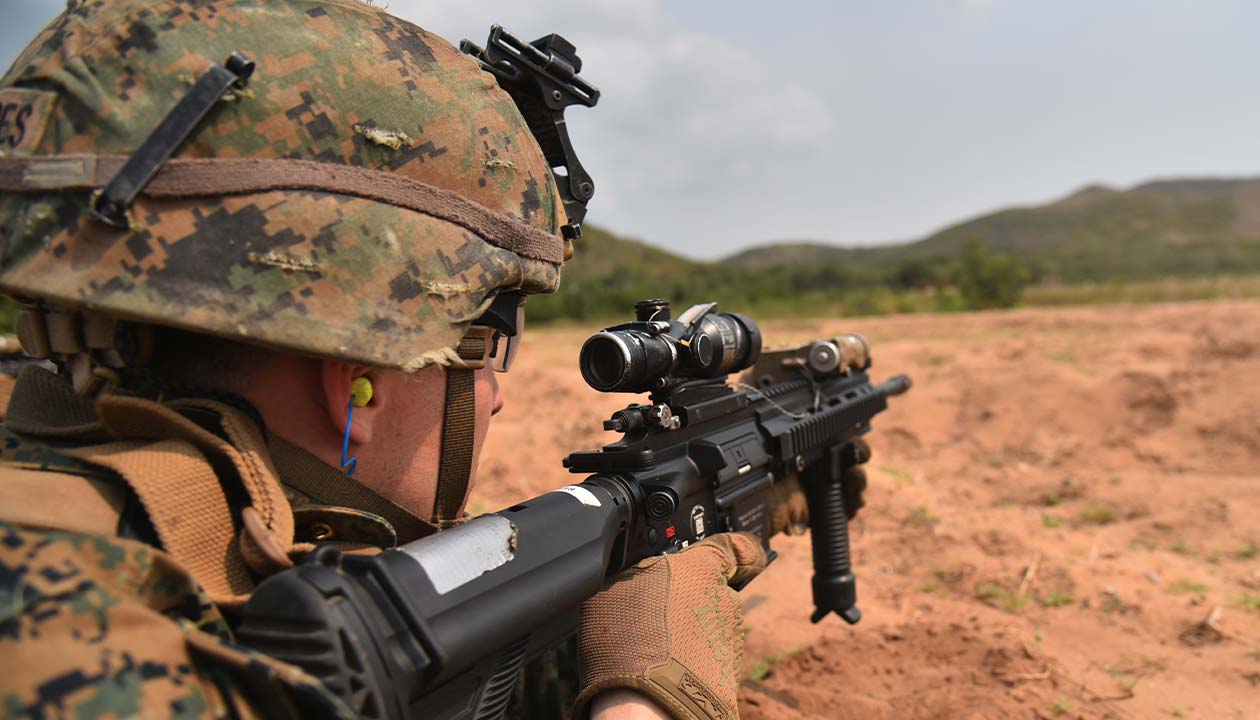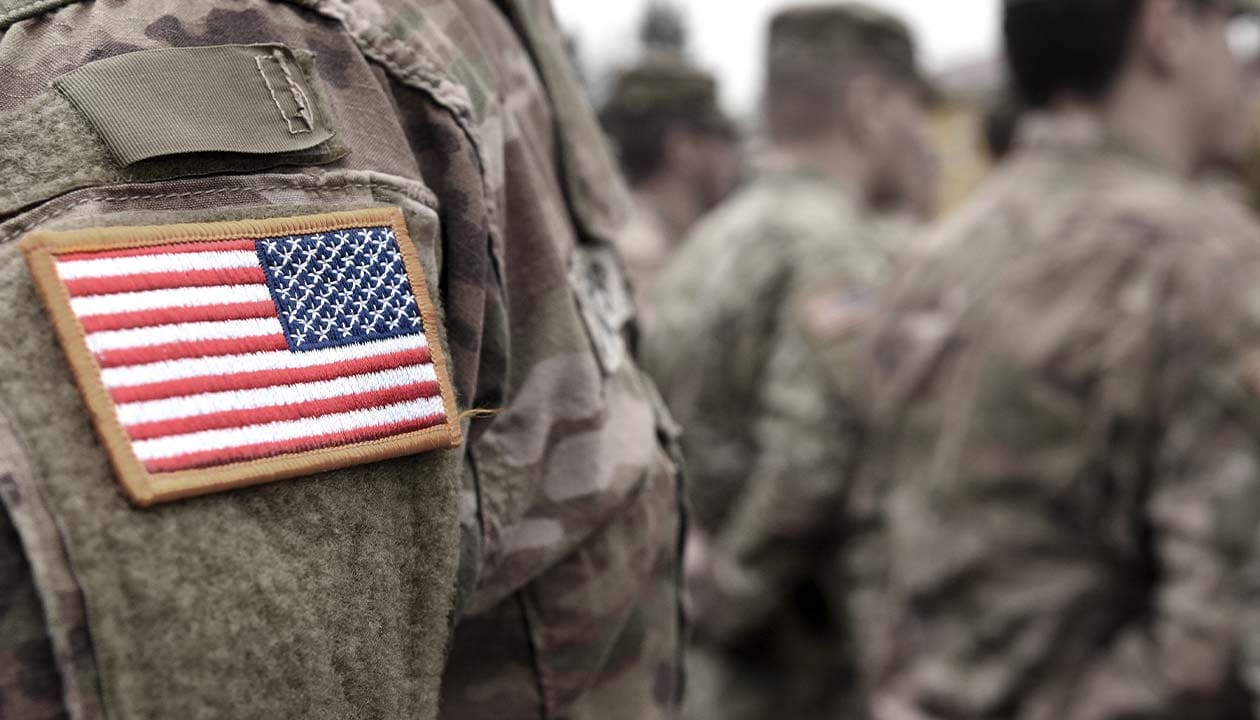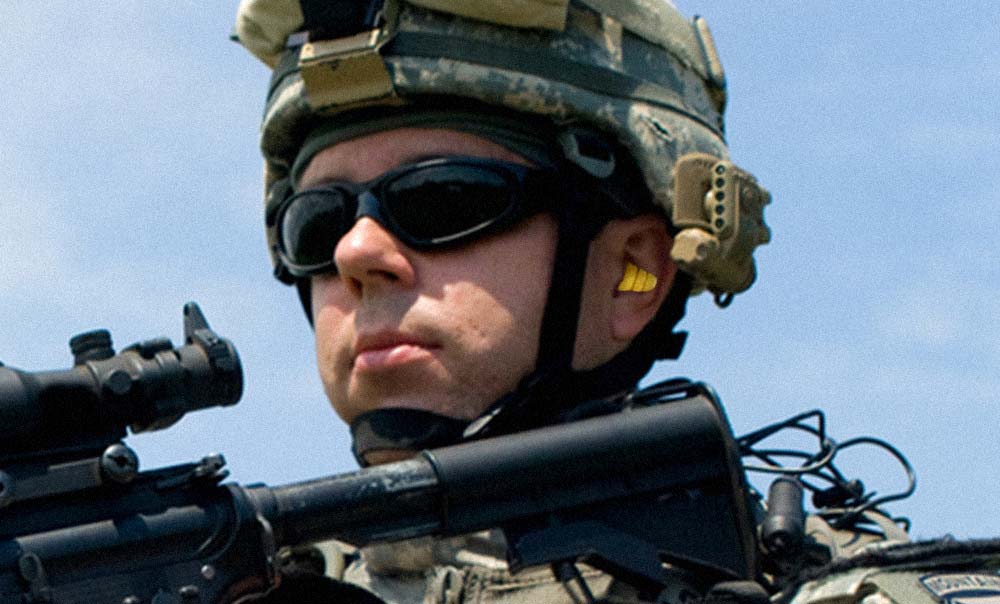US military service members often deal with deafening noises from explosives, guns, artillery, and aircraft. Recurrent exposure to such high-level noises without ear protection can cause internal eardrum damage and other auditory issues.
You should consider legal action if you’re an active military personnel or veteran who suffered permanent damage to your hearing after using these earplugs. Join the Many is ready to empower you and help you get the compensation you well deserve.
A Brief History of 3M Earplugs

In the late 1990s, the US military, through the US Department of Defense, entered an agreement with Aearo Technologies, later acquired by 3M. The exclusive contract was to supply combat earplugs for service members.
As standard issue equipment, 3M earplugs aimed to protect service members from auditory issues and hearing loss.
However, the original earplugs had some design flaws because they affected the ability to position the helmet properly. They were also too big, and soldiers could not carry them in the carrying case issued by the army.
The manufacturer developed the second version of the Combat Arms Earplug (CAEv2) to address these issues.
The modifications included shortening the earplugs so they could fit. The problem is that the new version could not reach deep enough inside the ear.
The stem was too short for most soldiers, especially those with larger ear canals, so there was no proper seal. This exposed the inner ear to harmful noise levels.
Aearo and 3M claimed CAEv2 has a dual-ended, nonlinear design. Soldiers could insert the yellow-colored side for explosions but still hear approaching enemies and spoken commands. The green side offered protection against all noises.
3M acknowledged that the earplugs had defects that prevented them from fulfilling their purpose. They were ineffective in protecting soldiers from loss of hearing and exposed them to a high risk of deafness.
3M acquired Aearo Technologies in 2008 and is therefore liable for its actions before and after the sale. They knew the dual-ended were defective yet failed to provide adequate warning to the military.
Most soldiers had no protection and suffered permanent damage and loss of hearing as a result. These brave soldiers are now suing 3M, demanding compensation for the negligence.
Join the Many who are ready to help fight for you or a loved one who suffered such damages while protecting our country.
Overview of Research Findings

The human ear can only cope with high-level noises for approximately fifteen minutes. According to federal regulations, the maximum sound level for workers is 115 decibels for fifteen minutes and below.
Workers in areas with higher noise levels for longer than fifteen minutes must wear hearing protection devices.
Hearing loss is a significant issue for the US Department of Defense (DOD). Every military branch conducts regular hearing tests and maintains records for all service members.
According to the DOD, signs of hearing issues due to combat include:
- Ringing or buzzing in the ears
- Ears feeling full after exiting noisy places
- Challenges hearing someone standing three feet away
- Difficulty understanding what people say
Military service members have regular exposure to noises of between 103 and 184 decibels for extended periods. Such environments increase the risk of permanently damaging the inner ear.
The Combat Arms Earplugs were unsuitable for most soldiers because they failed to provide adequate protection due to the short stem. The earplugs loosened while the user was unaware, so they made no difference.
The lawsuits against 3M claim that Aearo Technologies were aware of the defects in the original earplugs back in 2000. They knew before signing the contract to supply the military with earplugs yet they failed to issue any warnings.
During the testing phase, Aearo personnel discovered that users needed to roll back the flanges by the side of the earplug not inserted inside the ear. It was the only way to hold the earplugs in place and prevent them from coming loose.
When 3M acquired Aearo and resumed the contract entered into with the military, the technicians who tested the earplugs transferred to 3M, so it’s evident they knew about the defect. 3M did not correct any defects nor did they include particular instructions on folding the flanges and did not inform the military of the same.
The lawsuits also claim that Aearo and 3M were deceptive when presenting the reliability of the earplugs. The military could only buy the earplugs if they met a particular Noise Reduction Rating requirement (NRR). The required NRR was 25-40 decibels for the olive end and 0-25 decibels for the yellow-colored end.
3M and Aearo falsified the NRR test outcomes to get the contract from the military. Initial tests discovered that the olive end could only achieve an average of 10.9 NRR, while the yellow-colored end had an NRR of -2. A rating of -2 means the yellow part amplified the output of sound instead of buffering it.
Aearo conducted NRR retests but folded back the yellow-colored flange this time. The yellow-colored end still achieved a -2 NRR, but Aearo indicated it as 0, while the olive end achieved a 22 NRR.
They gave the military the second test results, indicating the same on all marketing products.
3M has no excuse to distribute defective equipment to US service members, fully aware that they needed it in combat. The negligence caused life-long injuries to brave soldiers who put their lives on the line.
Lawsuit History

Aearo Technologies Inc. and 3M Company supplied Combat Arms earplugs to the US military from 2003 to 2015. They ceased production voluntarily in 2015 before any recalls.
These earplugs were standard-issue for soldiers deployed to Afghanistan and Iraq during this period. In 2016, a competitor from California called Moldex-Metric, Inc. pursued a whistleblower lawsuit. The lawsuit accused 3M of fraud for selling defective earplugs despite being aware they failed to meet the required protection standards.
This negligence resulted in thousands of soldiers suffering from tinnitus and significant loss of hearing and exposed millions of others to these risks.
3M did not admit wrongdoing but decided on a $9.1 million settlement with the government in July 2018 for the allegations. After the settlement, Aearo Technologies and 3M received 2,051 more lawsuits, later merged into a Multi-District Litigation (MDL) in a Florida federal court.
One of the first veterans to pursue legal action against 3M was Scott D. Rowe from Texas. He served in Iraq between 2003 and 2004 as part of the 411th Military Police Company or “Fighting Bastards.”
Rowe used the army-issued Combat Arms Earplug (CAEv2) during training and combat. As a result, he suffered tinnitus and permanent hearing loss.
In June 2021, a district court in Florida awarded a soldier $1.7 million for developing tinnitus due to 3M earplugs. The jury verdict found 3M liable for failing to issue adequate warnings on the product.
In October 2021, a jury verdict awarded US Army veteran Brandon Adkins $8.2 million for his hearing loss. By May 2022, juries across the US awarded veterans and US service members about $300 million. There were 19 bellwether trials, and 13 of them favored service members suffering from tinnitus and hearing loss due to 3M’s defective earplugs.
In May 2021, the federal court awarded an army veteran, James Beal, in Pensacola, $77.5 million following a jury verdict. This is the largest settlement awarded to a single person yet.
By May 16, more than 290,000 lawsuits were presented in the Pensacola court, making it the largest mass tort litigation in the US.
The Beal trial was the final one of the bellwether trials. These test trials help both sides understand how future litigation will likely proceed.
It’s easier for both sides to evaluate whether the chances are better if they negotiate a settlement or proceed to trial. Although the trials are tests, the verdicts are genuine.
As the lawsuits continue to stream in, the legal system combines them into multidistrict litigation (MDL). In MDLs, each case is different, so the cases remain independent, unlike class actions. Presenting the lawsuits to one federal judge makes managing the cases easier and fastens the process.
Aearo Technologies recently announced a bankruptcy declaration. Since it’s a subsidiary of 3M, they requested the courts to hold Aearo Technologies individually responsible.
However, the court issued a ruling that allowed the lawsuits to proceed against Aearo and its parent company 3M.
Any service member who suffered tinnitus or permanent hearing loss after using military-issued earplugs between 2003 and 2015 can file a lawsuit. They deserve compensation for issued related to hearing damage, decreased quality of life, anxiety, and depression.
The Statute of Limitations for 3M Combat Arms Earplugs Lawsuits

The statute of limitations for 3M cases is different in every state. In some states, the statute of limitations starts when you discover or should discover the injury. In other states, it starts from the time you suffered the actual harm.
The time available to file your case depends on where you live, but most states allow two years to file any 3M earplug claim. However, you may have only one year to submit your case in some states, so ensure you contact Join the Many for assistance as soon as possible.
Does Filing a Lawsuit Mean Losing VA Disability Benefits?

If you’re receiving veteran disability benefits, filing a personal injury lawsuit against 3M will not affect your benefits.
Veterans receive disability benefits based on injuries and not financial needs or income. Therefore, any settlement you receive will not discontinue your benefits, regardless of the payment structure. However, it may affect other income-based or needs-based benefits.
Who Qualifies to File a 3M Earplug Lawsuit?

According to the Department of Veterans Affairs, over 50% of all military veterans suffer some loss of hearing due to their service.
The CDC published a recent announcement highlighting that US veterans are 30% more likely to develop hearing loss. Military service members who served from 2002 have a greater risk by up to four times.
Currently, about two million veterans get military disability compensation for tinnitus and hearing issues due to the defective 3M earplugs.
The precise number of hearing injuries due to 3M earplugs is unknown. Most injured service members experienced buzzing or ringing sounds in the ears and partial or total deafness. Intermittent or continuous tinnitus is also common, where people hear buzzing, clicking, ringing, or roaring sounds.
If you were near loud sounds from explosions, artillery, gunfire, and other military arms, contact Join the Many to find out your legal options.
This includes service in various wars, including:
- The war in Somalia
- The Iraq War
- American Intervention in Libya from 2015 to the present
- American-led intervention in Libya in 2011 as part of the Libyan Crisis
- American-led intervention in Syria from 2014 to the present
- American-led intervention in Iraq from 2014 to 2017
- Yemeni Civil War from 2015 to present
- The war in Afghanistan
- Operation Ocean Shield in the Indian Ocean
- The war in North-West Pakistan that was part of the War on Terror
What Compensation Can I Get From a 3M Earplug Lawsuit?

If you suffer from tinnitus or permanent hearing damage, you can recover various non-economic and economic damages. The amount and types of damages you may get depend on your specific condition and how it affects your life.
Some types of damages you can pursue in your 3M Combat Arms earplugs lawsuit include:
- Hearing aids
- Assistive devices
- Pain and suffering
- Lost wages
- Medical expenses and physician expenses
- Prescription medications
- Lost benefits
- Diminished quality of life
- Diminished future potential earnings
- Emotional distress and anxiety
Work with a Team Who Believe in Justice
The legal system is often complex and daunting, especially when fighting against established businesses and corporations. If you’re considering filing a claim against 3M, Join the Many exists to empower people like you and level the playing field. We’ll link you with the most experienced attorneys who will fight for you in court and build your case. You’ll pay no legal fees to the attorneys you’re matched with unless your claim is successful.

